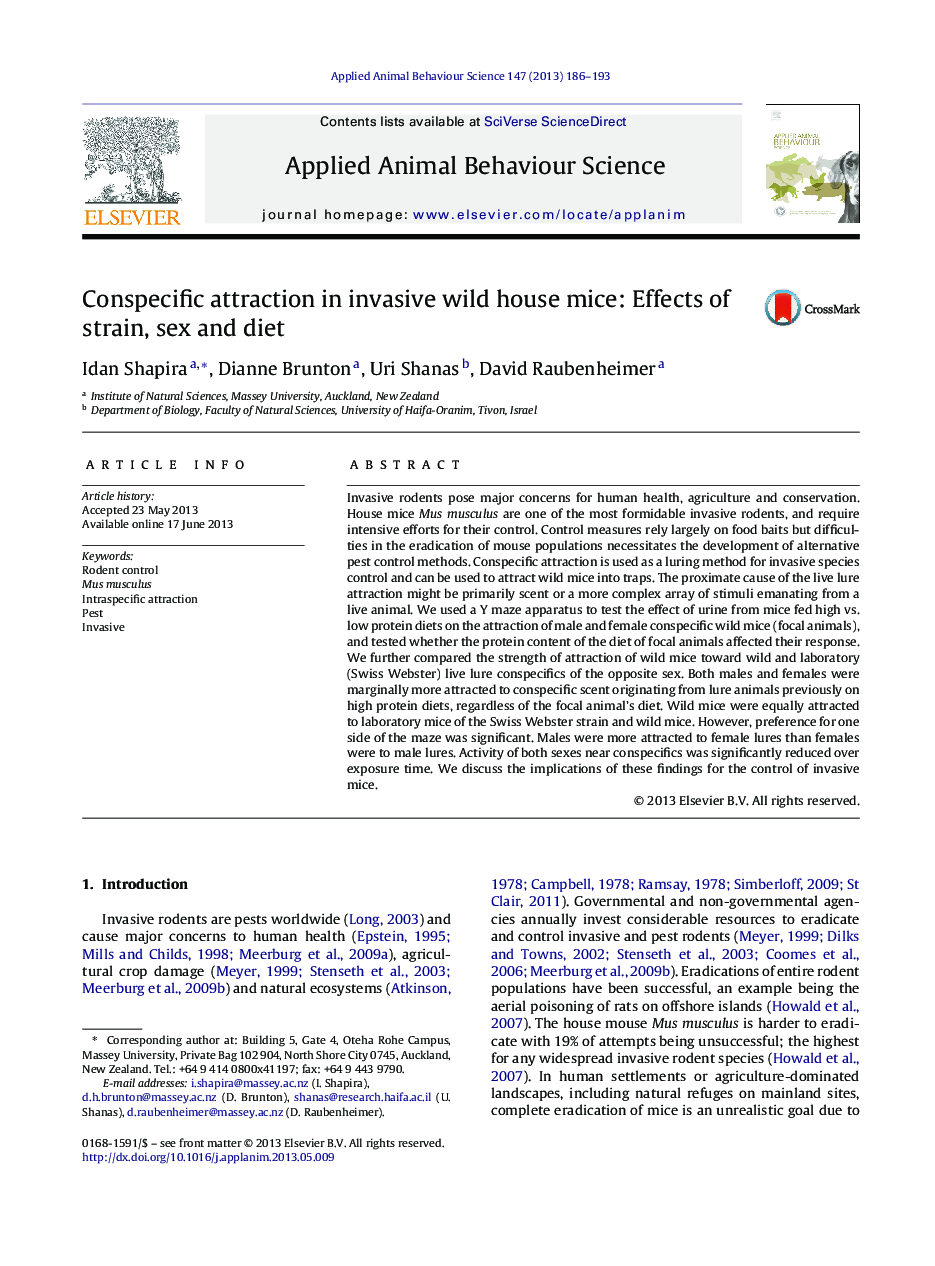| Article ID | Journal | Published Year | Pages | File Type |
|---|---|---|---|---|
| 4522746 | Applied Animal Behaviour Science | 2013 | 8 Pages |
Abstract
Invasive rodents pose major concerns for human health, agriculture and conservation. House mice Mus musculus are one of the most formidable invasive rodents, and require intensive efforts for their control. Control measures rely largely on food baits but difficulties in the eradication of mouse populations necessitates the development of alternative pest control methods. Conspecific attraction is used as a luring method for invasive species control and can be used to attract wild mice into traps. The proximate cause of the live lure attraction might be primarily scent or a more complex array of stimuli emanating from a live animal. We used a Y maze apparatus to test the effect of urine from mice fed high vs. low protein diets on the attraction of male and female conspecific wild mice (focal animals), and tested whether the protein content of the diet of focal animals affected their response. We further compared the strength of attraction of wild mice toward wild and laboratory (Swiss Webster) live lure conspecifics of the opposite sex. Both males and females were marginally more attracted to conspecific scent originating from lure animals previously on high protein diets, regardless of the focal animal's diet. Wild mice were equally attracted to laboratory mice of the Swiss Webster strain and wild mice. However, preference for one side of the maze was significant. Males were more attracted to female lures than females were to male lures. Activity of both sexes near conspecifics was significantly reduced over exposure time. We discuss the implications of these findings for the control of invasive mice.
Related Topics
Life Sciences
Agricultural and Biological Sciences
Animal Science and Zoology
Authors
Idan Shapira, Dianne Brunton, Uri Shanas, David Raubenheimer,
